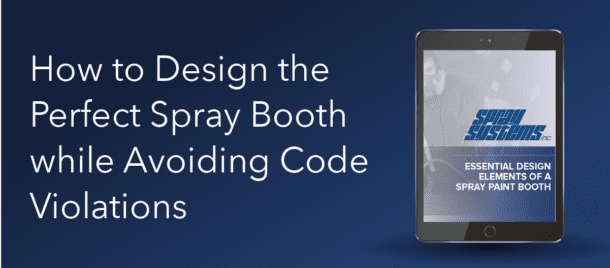- Solvents can release hazardous air pollution (HAP) and are often considered hazardous waste.
- To bring facilities into full compliance with EPA regulations, we recommend choosing environmentally-friendly solvent alternatives, installing air filters and disposing of solvents and hazardous waste properly.
- Solvents marked as “Safer Choice” have been evaluated by the EPA and may reduce the need for further hazard controls at your facility.
- Solvents and contaminated materials must be transported by a hazardous waste transporter and disposed of at a permitted hazardous waste disposal facility.
- Many solvents are deemed hazardous air pollutants, so the EPA requires that the exhaust filter for paint spray booths removes at least 98 percent of contaminants from the air.
- Companies need to stay abreast of ever-increasing requirements on solvent use in order to avoid violations, as well as keeping the environment and employees safe.
Over the last 10 years, the U.S. Environmental Protection Agency (EPA) has increasingly cracked down on the use of industrial paint solvents. Solvents, or agents that can dissolve, are broadly used in industrial applications. Painting, degreasing metal components and many other applications use solvents regularly. These solvents can release hazardous air pollution (HAP) and are often considered hazardous waste. To be fully compliant with new EPA regulations, companies must stay abreast of the latest regulations and adjust their processes to reflect the new regulations.
To bring facilities into full compliance with EPA regulations, we recommend:
- Choosing environmentally friendly alternatives
- Properly disposing of hazardous waste
- Installing air filters as needed
Choosing environmentally friendly alternatives to traditional solvents
Changing the paints used in your paint spray booth to more environmentally friendly alternatives is the simplest way to comply with EPA regulations. As it became clear that solvents were hazardous air pollutants in the 80s and 90s, chemical companies developed alternatives that did not use the most hazardous chemicals. The EPA and other agency resources, suggest that one option is to use chemicals that are marked with the “Safer Choice” label. This label is regulated by the EPA and underwent revisions in 2015. Be mindful as older chemicals may still be marked with the former name for the label, DFE Standard. Solvents marked as Safer Choice have been evaluated by the EPA and may reduce the need for further hazard controls at your facility.
The EPA further suggests that companies can use another tool for selecting more environmentally friendly alternative solvents for their industrial uses. The Program for Assisting the Replacement of Industrial Solvents (or PARIS) has developed a tool for companies to help find appropriate alternatives. The software allows users to search by specific chemical or physical properties and then recommends an alternative with low environmental impact. Identified as PARIS III, this software can also recommend additions to hazardous solvents to lower their environmental impact. It can be downloaded from the EPA website for use on Windows, MacOS and Unix systems. With this software, companies may create new processes that utilize only solvents with a low environmental impact.
Properly disposing of hazardous waste
Solvents are not only hazardous when in use, but also when they are ready to be discarded. The discarded solution itself may be flammable, which requires certain controls. Additionally, other items contaminated with the solvent, such as rags and filters, may also be considered hazardous waste. These items must be separated from non-hazardous disposal systems. Solutions cannot be dumped in municipal sewers because they are not equipped to handle solvents. Solvents and contaminated materials must be transported by a hazardous waste transporter and disposed of at a permitted hazardous waste disposal facility.
There are some exemptions to hazardous waste disposal. For example, contaminated paper towels are sometimes excluded and can be considered normal, non-hazardous waste. Additionally, companies may be excluded from the hazardous waste process by switching to an alternative solvent with a low environmental impact.
Installing air filters as needed
Many solvents are deemed hazardous air pollutants. The EPA regulates the amount of solvent pollution that can be released from each facility. For example, for paint spray booth environments, one way to deal with these pollution restrictions is to install exhaust filters. The EPA requires that the exhaust filter for paint spray booths removes at least 98 percent of contaminants from the air. With exhaust filters in place, the amount of air pollution is drastically reduced to EPA acceptable levels. However, companies should make sure they have appropriate and effective filtration system. Air filters that require replacements are often considered hazardous waste and procedures for replacing them need to take hazardous waste protocols into account.
Having a firm understanding of the properties of all chemicals and materials involved, as well as the demands placed on each part of the filtration system will lead to a stronger and better compliance of regulations you’re required to follow. The design and material composition of exhaust filters should be chosen based on the nature of the specific volatile compounds in the booth. Picking the right exhaust filter material can drastically improve efficacy and cut down on costs.
An air pollution permit from your local agency is almost always required for spray booth installations. The need for this permit depends on the design, the type of pollutants emitted and the amount of solvent used per day. Some exceptions may apply, but companies need to check with local regulations to ensure that all practices comply with local regulation. Companies that use hexavalent chrome are under the jurisdiction of the National Emission Standards for Hazardous Air Pollutants (NESHAP). To be compliant, companies need to review emission limits, equipment design standards, and required work processes.
Staying Informed and Compliant
Companies need to stay abreast of ever-increasing requirements on solvent use in order to avoid violations, as well as keeping the environment and employees safe. However, there are many tools available to help companies stay compliant. The easiest place to start is to see if current solvents can be replaced with low environmental impact alternatives. If a new solvent has low impact, hazardous waste disposal procedures might not be necessary. In the case that there is no viable alternative for a hazardous solvent, companies should review requirements for hazardous waste disposal and look into the need for air pollution permits.
Contact Spray Systems today, and ensure that your facilities are using the most-up-to-date paint spray booth technology that satisfies all local agency and federal codes, and provides you a safe and effective paint finishing environment. Our booth design experts will walk with you every step of the way to guarantee that you receive the best booth for your products and components, all while keeping your practices as environmentally-friendly as possible.



